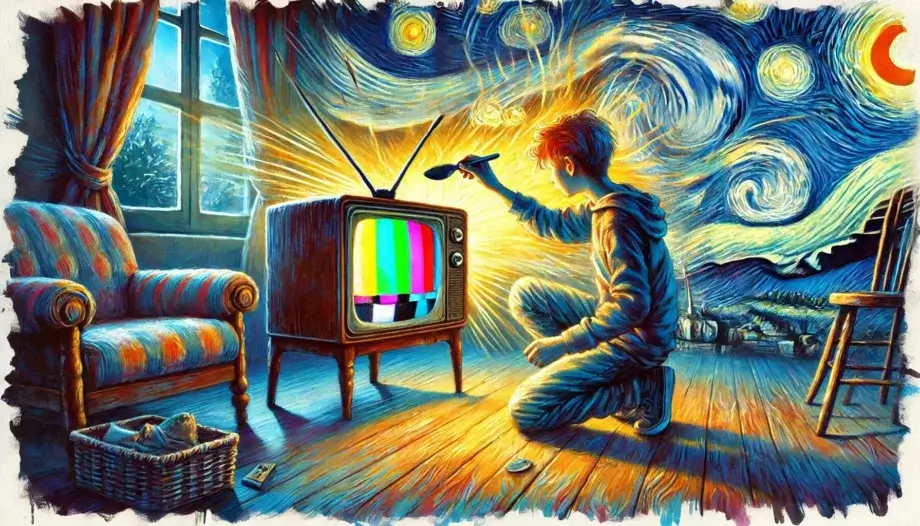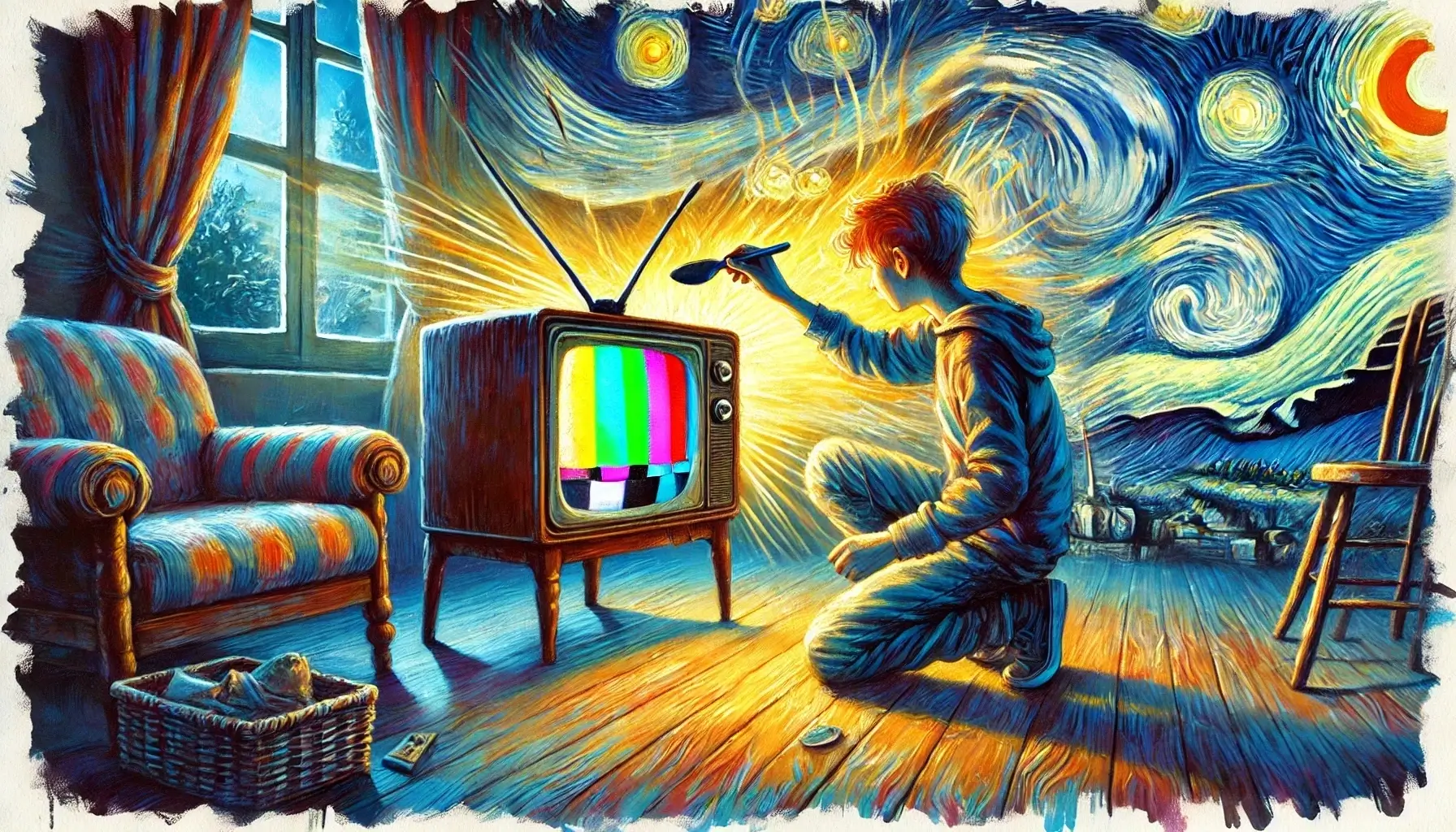“Innovation distinguishes between a leader and a follower.”
Steve Jobs
When I was a kid, we had this old, creaky TV that only worked if you gave it a well-timed thump, like you were trying to wake it up from a long nap. You had to hit it just right—too soft and the picture would keep scrolling like a slot machine, too hard and it would power off completely.
But the real battle wasn’t the TV. It was the antenna.
Ah, yes, the wobbly, judgmental rabbit ears—less technology, more performance art, requiring Cirque du Soleil-level contortions to make Saturday morning cartoons vaguely watchable. And there I was, one arm stretched to the ceiling, the other awkwardly bent behind my back, balancing on one leg while trying to maintain eye contact with Bugs Bunny, praying that a sneeze wouldn’t ruin the whole thing.
It wasn’t ideal, but it worked… sort of.
Innovation by Spoon
After one too many mornings of being frozen in place like a low-budget Statue of Liberty, I decided enough was enough. Surely, there had to be a better way—a creative fix that would save me from becoming a permanent fixture in my family’s living room. I glanced around the room, scanning for inspiration, and my eyes landed on a spoon.
Yes, a spoon.
In a moment of MacGyver-level brilliance (or perhaps just desperation), I thought, Why not tape it to the antenna? It had the right weight and balance, and best of all, it wouldn’t complain about holding still.
So, I grabbed some tape, secured the spoon to the rabbit ears, and stood back to admire my work. It was perfect. The picture came in crystal clear, and I even let myself imagine I’d unlocked some kind of household engineering secret.
For all of three minutes.
Then, like all great innovations that are a little too good to be true, the spoon slid off, clattered to the floor, and the antenna collapsed like a sad, metal slinky. My perfect picture instantly dissolved into the familiar psychedelic snowstorm, and I was back where I started—only now with a broken antenna and a spoon on the floor.
A Lesson in Innovation
That was my first lesson in innovation: sometimes you strike gold, and sometimes you’re left holding a broken antenna, betrayed by a spoon that clearly had its own agenda.
But here’s the thing—it didn’t matter that the spoon didn’t work long-term. What mattered was the idea, the attempt, the willingness to try something different, even if it meant failing spectacularly. I could’ve just stayed in my human pretzel position forever, but instead, I tried something new.
And that’s the root of innovation, isn’t it? You don’t know if it’ll work, but you try anyway, because the alternative—staying in the same place, doing the same thing—is far more exhausting.
Marketing: The New Antenna
Fast forward to marketing, a field where algorithms have replaced rabbit ears—equally temperamental, just harder to thump. Every campaign, every strategy is a bit of a balancing act, a shot in the dark where you’re hoping to move from static to something crystal clear. And much like taping a spoon to an antenna, sometimes you try things that work beautifully—for a while. Then, suddenly, the landscape shifts, the spoon slips off, and you’re back to square one, frantically adjusting the rabbit ears.
But here’s the kicker: That’s the job. You’re not always going to get it right. You’ll experiment with creative ideas that look brilliant in theory, only to watch them crash to the ground in practice. And that’s fine.
In fact, it’s necessary.
Every spoon on the floor is a step toward the idea that sticks. You can’t get to the winning solution without all the fumbles along the way.
Loving the Process
The real trick to being good at this—at innovation, at marketing, at life—is learning to love the process. You’ve got to embrace the moments where the picture turns fuzzy, where the antenna goes limp, because that’s when you’re closest to something new, something different. The courage to be undeniably yourself—to try, to tweak, to risk looking foolish—is what leads to the breakthroughs.
So, when your antenna fails and the spoon’s on the floor, remember: you’re still doing it right. You’re still moving forward. And one day, you’ll find the idea that sticks for more than three minutes.
Until then, keep taping spoons to things. You’re closer than you think.






